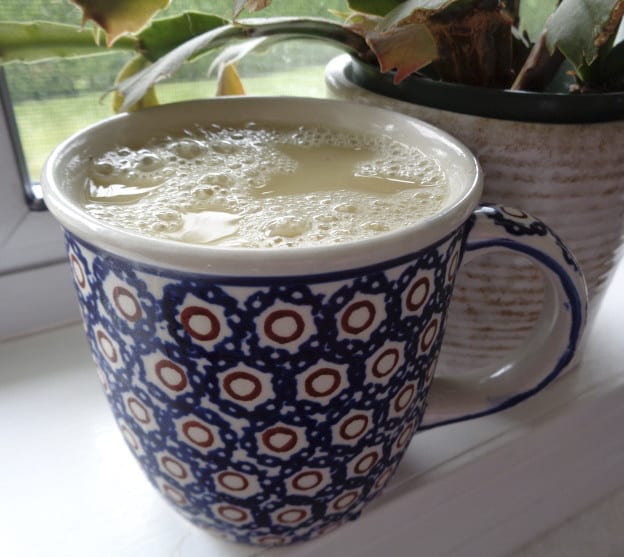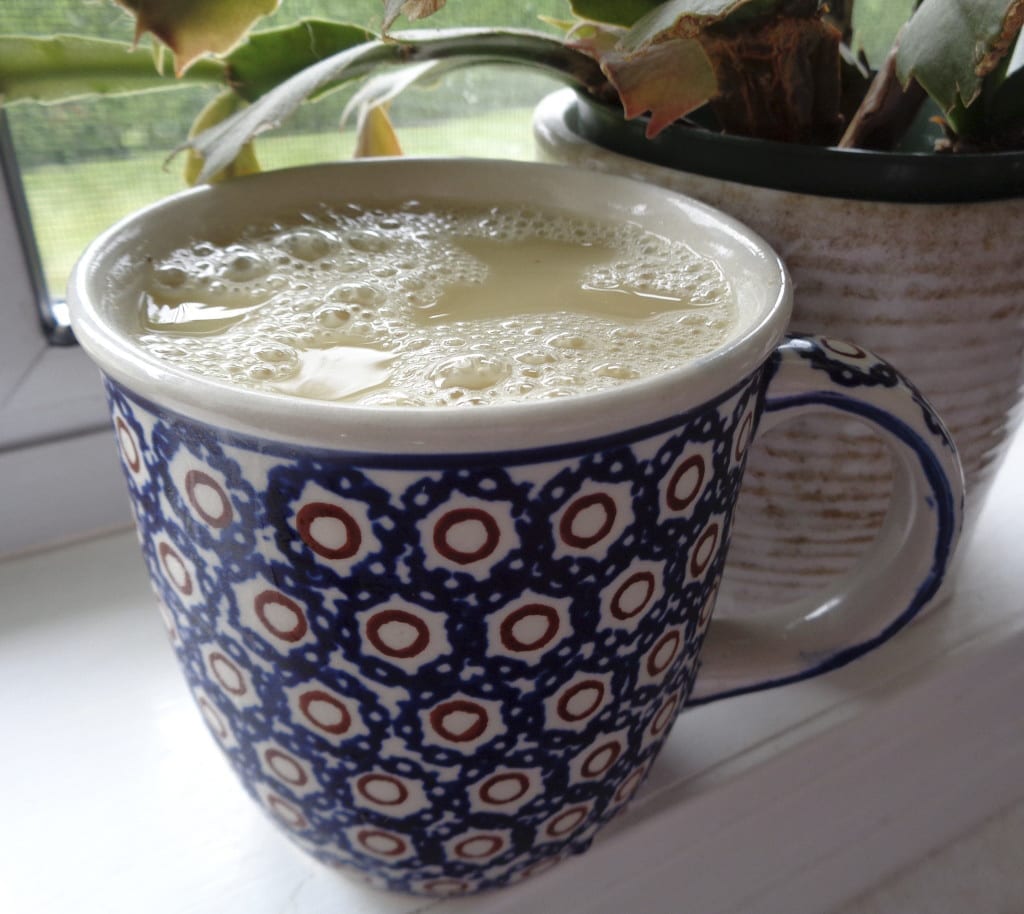The seasonal weather has turned here and we are experiencing the first of the wet grey days that keep the rainforest healthy. I am also appreciating the fact I don’t need to water the newly sprouted grass seeds filling in the empty patches of the sun baked front lawn. So instead I am going to pull out some pictures and finish off a post about a warming tea made just for sweater days like this and ooohhh so healthy.
I may be wrong about this but I think, with a very broad across the board brush stroke, that the choices people make to quench their thirst are based on repetitive habit and not on the benefits that choice can give to their body.
 There are exceptions of course, I have posted about Jean’s tea before. She has a garden full of herbs that get dried and combined each summer for use through the year.
There are exceptions of course, I have posted about Jean’s tea before. She has a garden full of herbs that get dried and combined each summer for use through the year.
Her “secret” mix contains stinging nettle, cleavers, dandelion root and leaves, horsetail, wild camomile, lemon balm, rose petals, lemon verbina, Morrocan mint, lavender buds, St. John’s Wort petals with a bit of fresh squeezed ginger added to the pot with the boiling water.
I know that not everyone has access to a garden of their own herbs but there are a plethora of combinations that can support and boost our body’s systems. One very well respected combination is known as yogi tea and you can usually find all the ingredients in the bulk and produce sections of your local grocer. Cutting down the quantities works too if you just need a couple of finished cups.
You will need:
2 sticks of cinnamon or the equivalent in bark
4 slices of fresh ginger
12 whole cloves
24 whole black peppercorns
16 whole cardamon seeds
40 oz. water
1 tsp. black tea
1 – 2 cups milk
 Before we start, a word about tumeric ( those orange pieces on the left of the picture). Months ago I put together a tea related to inflammation and wanted dried tumeric for it. I mistakenly thought I could buy it dry and then grate or grind it into the size I needed. It cost me my Cuisinart. Now I buy it fresh, grate and then dry it in the oven. ( In the container on the left side of the picture above.) However I was left with lots of bigger pieces and so I have been adding them into the yogi tea recipe. Not part of the traditional recipe but still good for your insides, especially as there is already black pepper in the ingredient list and pepper helps up the absorption rate of the working components of tumeric.
Before we start, a word about tumeric ( those orange pieces on the left of the picture). Months ago I put together a tea related to inflammation and wanted dried tumeric for it. I mistakenly thought I could buy it dry and then grate or grind it into the size I needed. It cost me my Cuisinart. Now I buy it fresh, grate and then dry it in the oven. ( In the container on the left side of the picture above.) However I was left with lots of bigger pieces and so I have been adding them into the yogi tea recipe. Not part of the traditional recipe but still good for your insides, especially as there is already black pepper in the ingredient list and pepper helps up the absorption rate of the working components of tumeric.
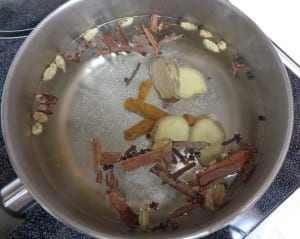 Yogi tea is said to support the immune system, aid digestion and circulation. It also aids mental clarity and is a traditional mix used commonly on the Indian sub continent. You might well recognize the ingredients as similar to what is known as Chai Masala which can also contain fennel, star anise, possibly coriander and in North America lots of sugar.
Yogi tea is said to support the immune system, aid digestion and circulation. It also aids mental clarity and is a traditional mix used commonly on the Indian sub continent. You might well recognize the ingredients as similar to what is known as Chai Masala which can also contain fennel, star anise, possibly coriander and in North America lots of sugar.
The difference is that this tea concentrates on the health benefits of the spices and not the dessert like experience you would get at your local Starbucks.
Focus on your intention as you gather the ingredients. Is your intention general health or a specific issue? Hold a sense of personal health and well being as you begin, a thankfulness for the goodness being prepared to support your physical body. Do you ever get that “Mikey likes it!” feeling when you give your body something supportive? Yogi tea is that kind of goodness.
Into a pot, large enough to contain the water and milk, place the water only and then the herbs listed above.
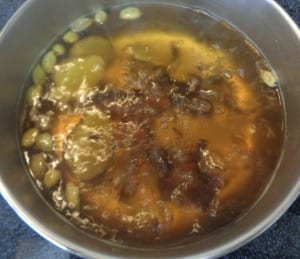 Bring to a boil, cover and then reduce to a simmer.
Bring to a boil, cover and then reduce to a simmer.
Simmer for 30 minutes. Your kitchen will smell warm and cozy. Do take the time. These are all dried spices and allowing then to soften so the water can absorb their flavours will give the tea more benefits.
The goodness of the herbs will change the colour of the water.
Once the tea has simmered, add the loose black tea and milk.
Bring the liquid back to a boil and immediately strain and serve. ( Sorry, blueberry pancakes are not part of the recipe. Doesn’t mean you can’t whip up a batch. )
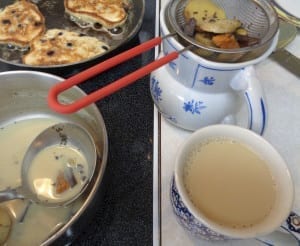 A spoonful of local honey can be added if that suits your tastebuds.
A spoonful of local honey can be added if that suits your tastebuds.
We think about the health benefits of what we choose to eat; gluten free, low carb, paleo, low fat, sugar free, usually by way of what is left out.
Yogi and other herbal tea blends are a way of turning that idea around and choosing to focus on what we are putting into our bodies that support healthy living.
There is a much to learn about how herbs combine and support each other, what flavours work together or cancel each other out. A common comment is that teas do not taste the way they smell so it might take a little experimenting to get to a combination that is satisfying to your purpose and palate. Being conscious of what you are drinking is well worth the effort.
Yogi Style Tea from My Kitchen Wand

